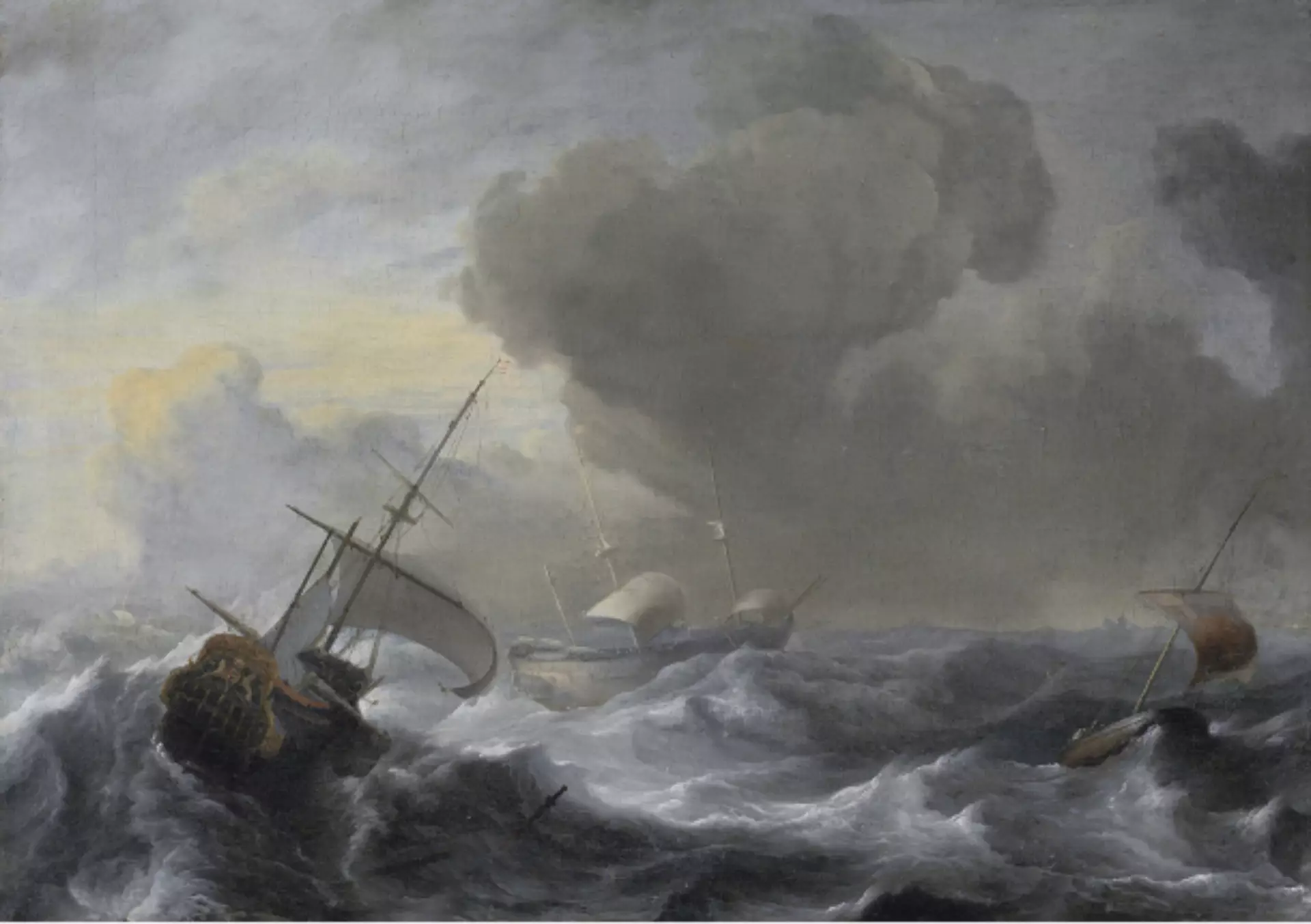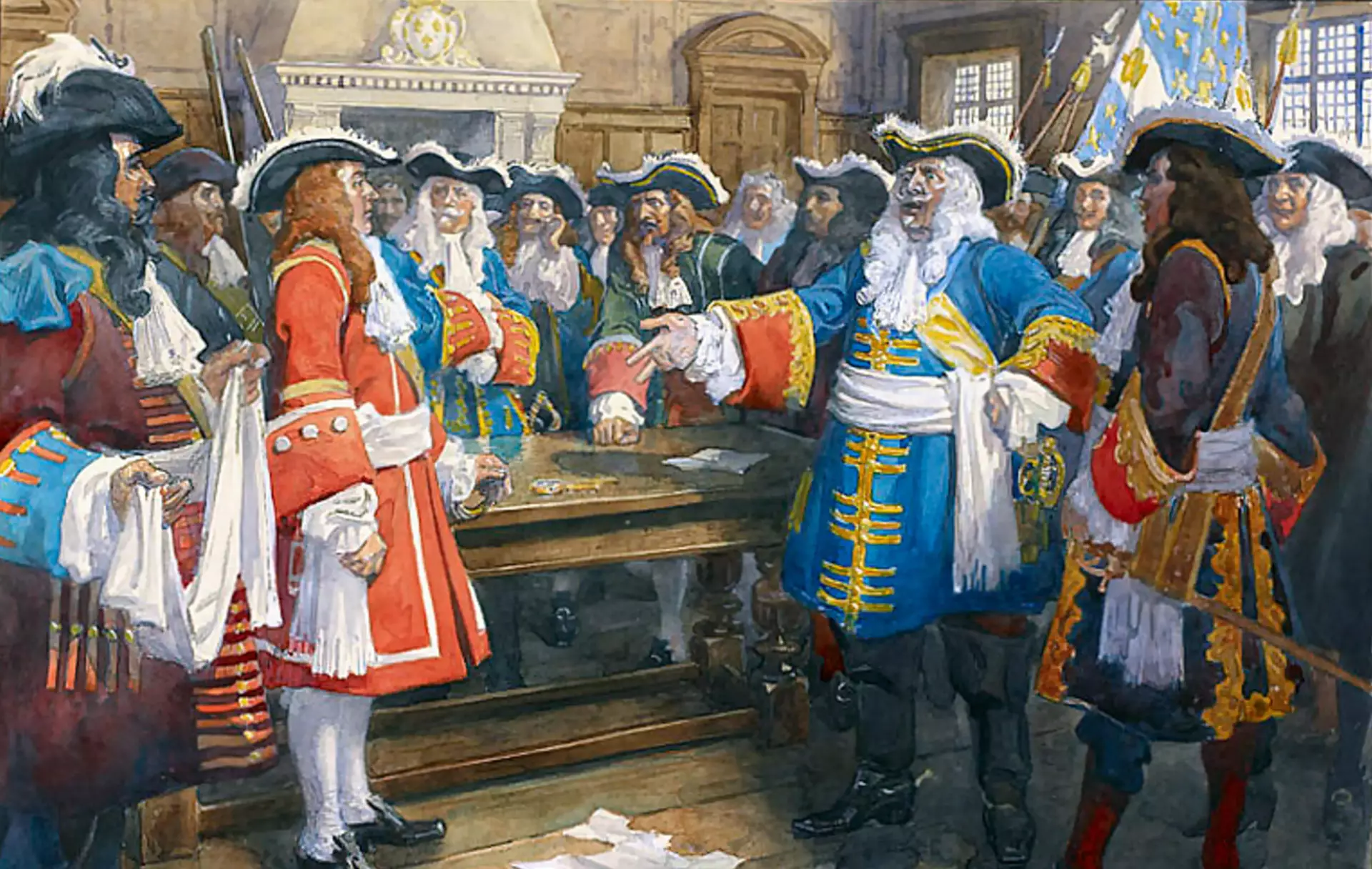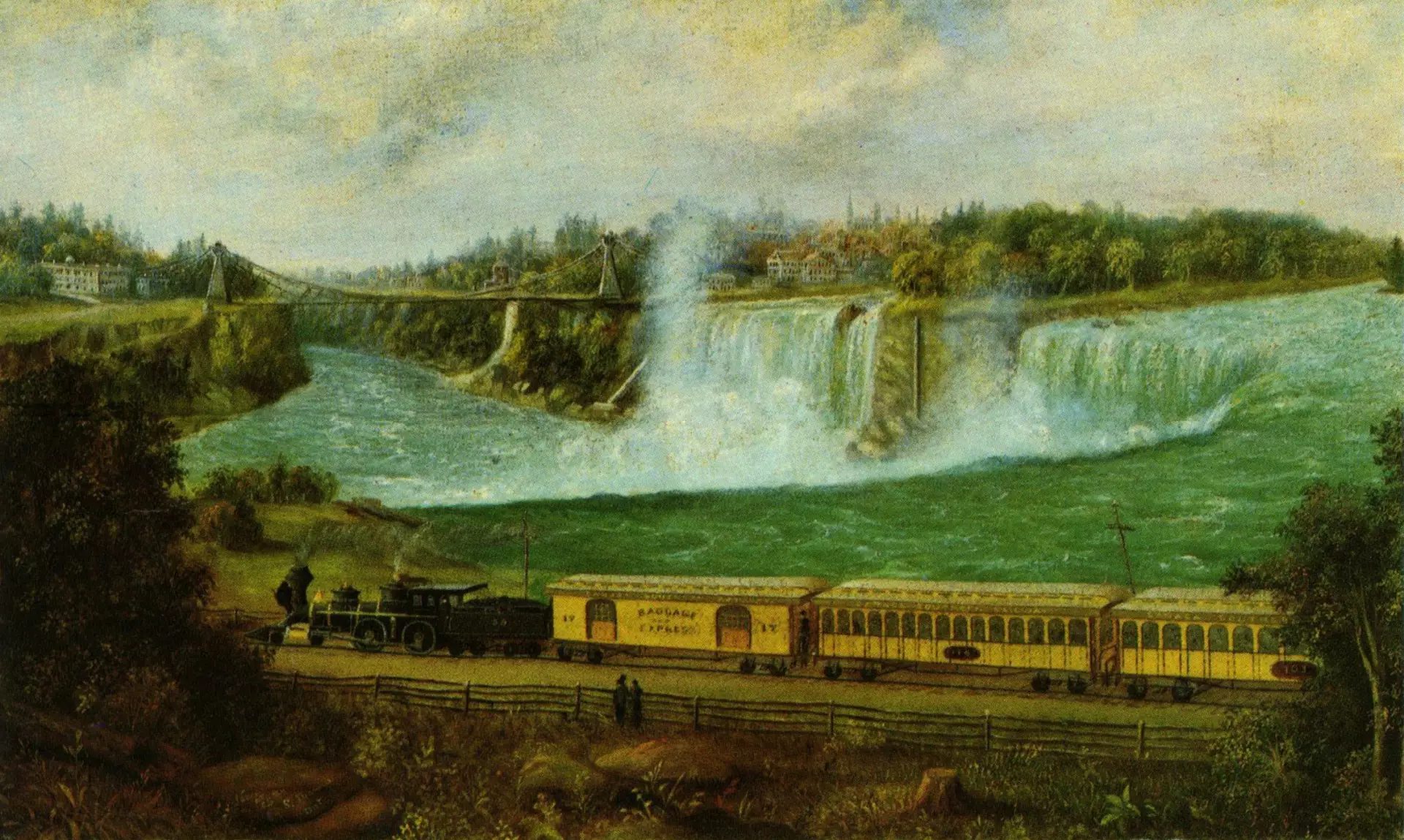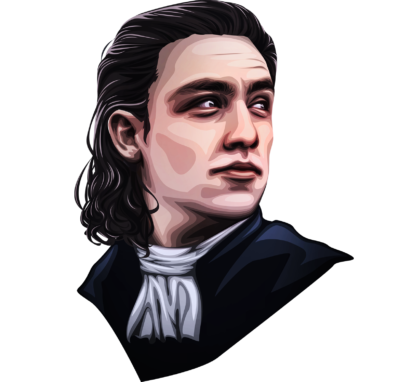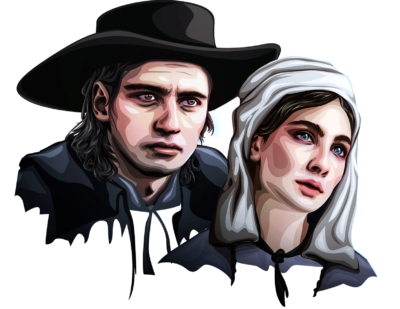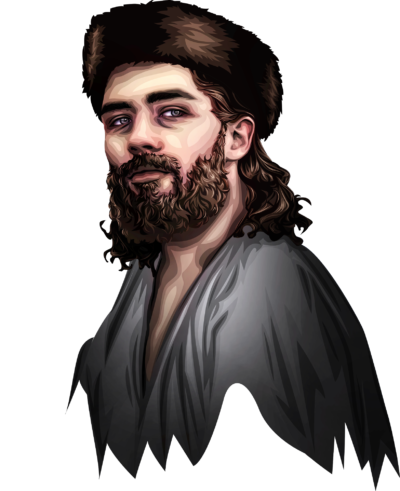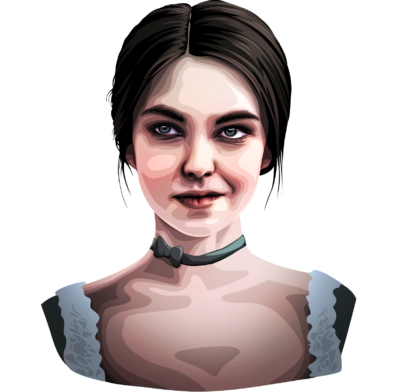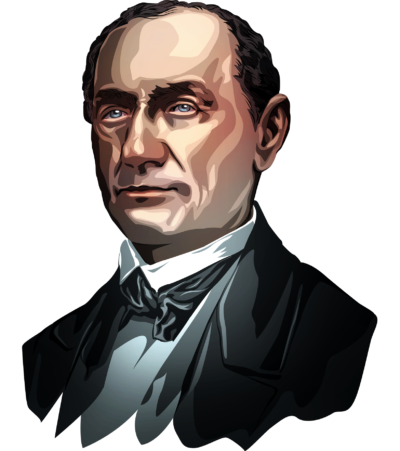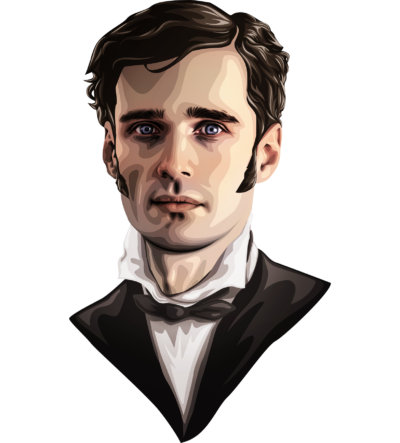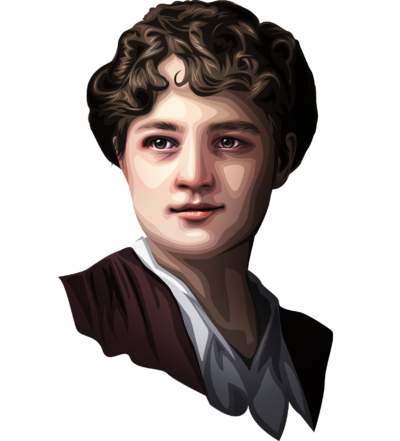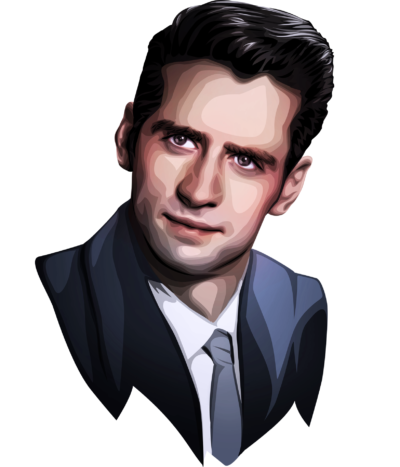Canada Inc.
Getting ahead
In 1791, the Constitutional Act divided Canada in two. Upper Canada was populated by Loyalists who had fled the United States following the War of Independence, along with a contingent of Scottish, Irish and English immigrants. Lower Canada was home to French Canadians who, although recently conquered, were not beaten.

The Canada Southern Railway at Niagara. Robert Whale, ca. 1870.

Map of the Canadian Pacific Railway, showing the routes (indicated by lines in red) followed by the early fur traders. Poole Brothers Inc., 1893.
The English had power and money.

Lower (Bas) Canada City Bank One Penny (Deux Sous) Bank Token 1837. Centpacrr, 2013.
How would the French Canadians make their way with the country now under British control? They did what they could, according to their temperaments. The majority “submitted” to British rule and the control of the clergy. But rebel factions, the Patriotes, rose up in 1837 and 1838.

The Assembly of the Six Counties held in Saint-Charles-sur-Richelieu, in 1837. Charles Alexander Smith, 1891.
Back when the clergy wielded tight control over French Canadians, who did people look up to? Doctors, lawyers and priests. From the pulpit, priests urged the faithful to stay away from the world of business and money. That didn’t stop a few bold entrepreneurs from making their way in the world.
The doctor
Pierre Beaubien
A man devoted to his people


Pierre Beaubien was a brilliant student and the first Canadian to return home from Europe with a medical degree in hand and a stethoscope in his pocket. Back home, he devoted himself to the physical and financial health of his fellow French Canadians. Whether he was seeing a patient in his office or attending one of many committee meetings, he was always attentive to people’s needs and demands.
A scientist, intellectual, businessman and committed citizen, he was prepared to do whatever it took to defend his people. He was a close friend of Louis-Joseph Papineau, leader of the Patriotes, and paved the way for French Canadians to take their place in the new country of Canada.
A gifted student
Pierre Beaubien was born in Saint-Antoine-de-la-Baie-du-Febvre on August 13, 1796. His got the name Beaubien from his direct ancestor, Michel Trottier, seigneur of Rivière-du-Loup-en-Haut (Louiseville).

The Moras-Beaubien house, in Nicolet. Pierre-Georges Roy, n.d.
Pierre Beaubien left for France in 1817 to study medicine. He was a brilliant student and the first Canadian physician to defend his doctoral thesis in Paris.
He returned to Canada in the fall of 1827. In his luggage was a stethoscope, an innovative medical diagnostic device developed by his professor, René Laënnec.

Laennec and the stethoscope. Robert A. Thom, 1960.

Laennec stethoscope made by Laennec. Science Museum Group Collection, ca. 1820.
Shortly after his return from Europe, he fell under the spell of Marie-Justine Casgrain, an attractive, educated and wealthy 25-year-old widow, introduced to him by a friend. The got married in Quebec City on May 11, 1829.
“Justine had a lovely face with regular features and a healthy complexion. Her height and dignified bearing gave her a very refined air.”
The couple settled in Montreal. Marie-Justine gave birth to 11 children, but six of them died young and another drowned at the age of 20. Of the four surviving children, three chose the religious life.
Only Louis-Joseph-Benjamin Beaubien, named in honour of his godfather Louis-Joseph Papineau, married and continued the family line.

The Beaubien Family. 1874.
A devoted
doctor
Pierre Beaubien was very knowledgeable and cultivated. He was just as interested in music and literature as he was in business and politics.
In 1832, he was a health officer for the City of Montreal. As a scientist, he took an interest in the activities of the Natural History Society of Montreal, of which he became a member in 1834.
In 1835, he participated in the creation of the Banque du Peuple, designed to replace the Bank of Montreal as the financial institution of choice for French Canadians.
He was an energetic participant in the work of the Association Saint-Jean-Baptiste, founded in 1843 (today the Société Saint-Jean Baptiste), which supported widows, poor people and orphans left to charitable care.
He was the official physician of the Sulpicians, the Congrégation de Notre-Dame, the Montreal General Hospital and Hôtel Dieu, and the head physician of the Montreal prison. He was also a co-founder of the École de médecine et de chirurgie de Montréal, where he taught until the end of his life.
This doctor with a head for business increased his personal wealth and that of his wife as well. He took advantage of his ties with the political and religious elite to become one of the largest landowners in Montreal.
He bought land in the large agricultural parishes of Côte-des-Neiges, Côte-Sainte-Catherine, Côte-Saint-Louis and the current City of Outremont, as well as in the future Mile-End and Plateau-Mont-Royal neighbourhoods.
Keen to help establish French Canadian Catholic institutions, he donated land to build an institute for the deaf and the Saint-Enfant-Jésus-du-Mile-End parish church.

DEEPLY INVOLVED IN POLITICS
Pierre Beaubien’s work was not limited to medicine. He also devoted much of his energy to politics. When the Patriotes rose up, he supported Louis-Joseph Papineau, whose home was attacked by English rioters in November 1837.
Back view of the church of St. Eustache and dispersion of the insurgents. Lord Charles Beauclerk, 1840.
Pierre Beaubien was then elected to the Legislative Assembly of United Canada and to municipal positions as well. He was an elected official of the City of Montreal from 1843 to 1844, and of Chambly from 1848 to 1849. He strongly believed in Montreal’s economic potential and advocated free trade.
He was also elected president of the Société Saint-Jean-Baptiste de Montréal-SJBM in 1859 (1859–1860).

House of the Legislative Assembly around 1848. James Duncan, ca. 1848.
Dying in peace
The doctor died on Sunday, January 9, 1881, in Outremont, at the home of his son, the Honourable Louis-Joseph-Benjamin Beaubien, surrounded by his children and grandchildren.
Marie-Justine Casgrain died in October 1882.
In Montreal, Beaubien street was named after him in 1912.

Roman Catholic Cemetery entrance, Côte des Neiges, Montreal, QC, 1897. Alfred Walter Roper, 1897.

Pierre Beaubien was successful in everything he did: in his medical vocation and in his career as a politician and businessman. He became one of the largest property owners in Montreal and built institutions to help emancipate French Canadians. Throughout his life, he listened carefully to what his family, colleagues and compatriots had to say.
